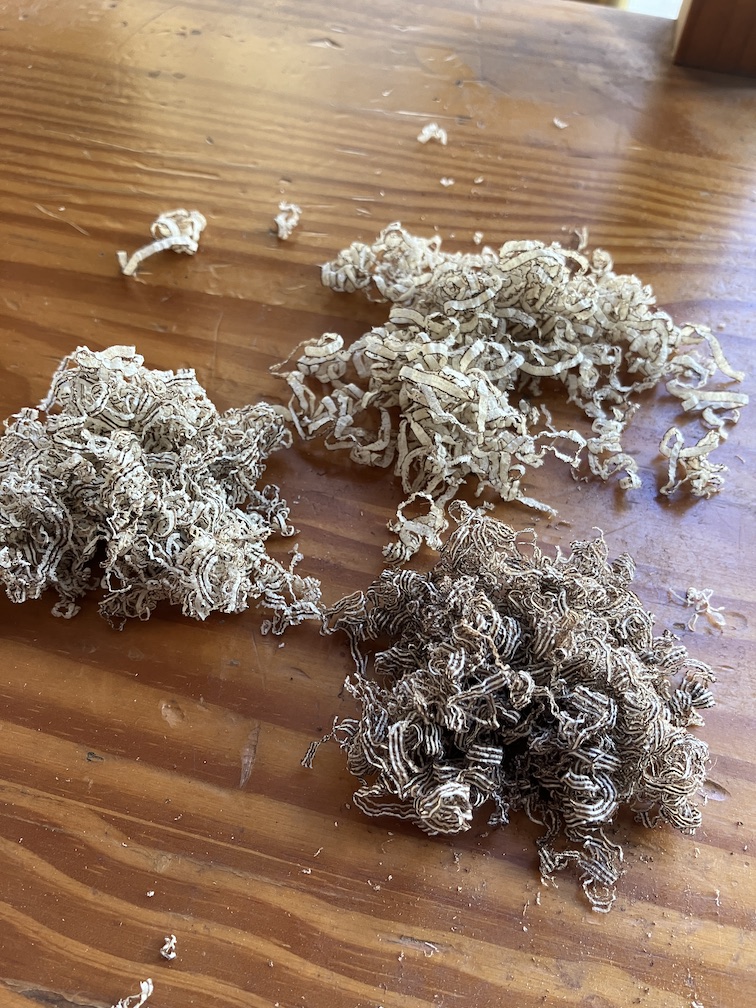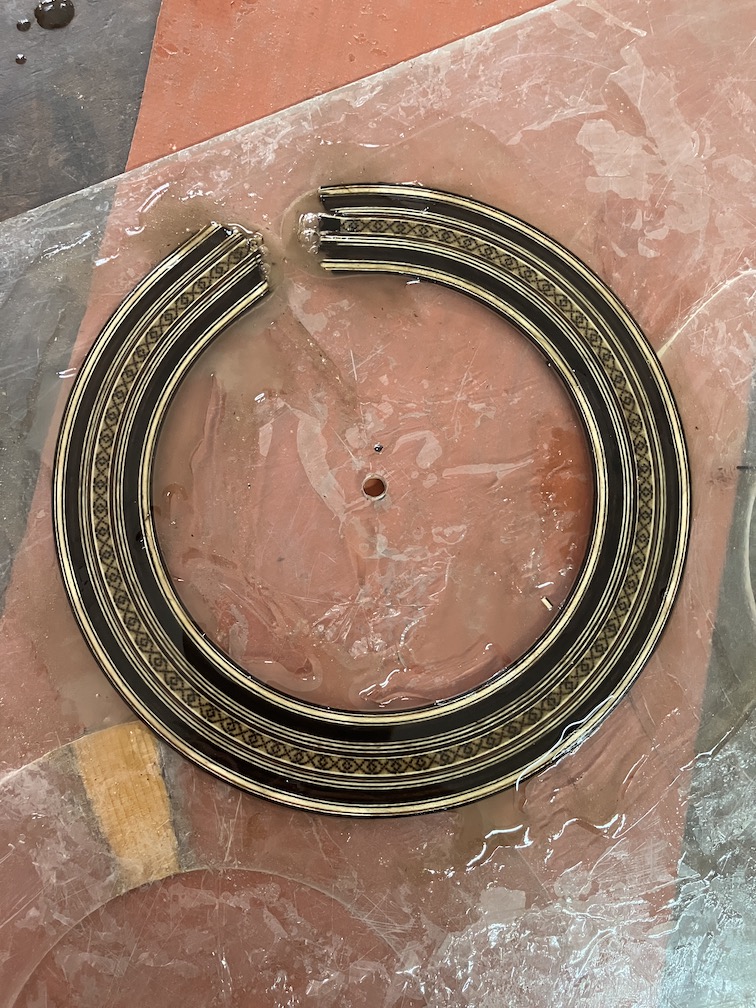I have now made 27 copies of Segovia’s Santos and the first batch of rosette material is used up. I won’t show the whole process for the new ones because I already showed that in a past installment. Just a few pictures here to inspire you to get to work. I skipped a step here going straight from the slices you see in the first photo to glueing them to the veneer. The idea to skip a step comes from José Luis Vigil.




Tag Archives: lainvencible
Romanillos at the Badalona Guitar Festival
If memory serves me I met guitar-maker Antonio Manjón through the late Rolf Eichinger when he had the workshop next to mine and was mentoring me. Since that time I have visited Antonio in Badalona and he has visited me here both on numerous occasions. We have collaborated on a few articles for the Journal of Cultural Heritage and the Festival de la Guitarra de Córdoba. However, I think Antonio should be applauded most for his leadership in the Associació de la Guitarra de Badalona. Their festival is one of the best I have ever attended. Young guitarists are promoted and encouraged, care is taken to ensure an intimate setting and great respect is shown for guitar-makers when they have been a part of it. I attended with a guitar and a presentation back in 2017. The latest festival was by all counts another excellent meeting of guitar-makers, musicians and guitar-lovers. The video speaks for itself.
Yew Tree
As I almost always do, I spent Christmas with my wife’s family in the north of the province of Granada in the village of Castril. The mountains and the river valley there are nothing short of spectacular and a great place to explore. The photos show a yew tree which is said to be over a thousand years old. I have never used yew for instrument-making nor have I ever made a longbow. It seems that the English preferred this wood for their bows and there are a lot of references to yew used for lute bowls. I had a good look at the tree and I certainly would not choose this as a tonewood. Lovely tree though.


Wormholes
 Who wants a guitar made with this back? Should we use wood with wormholes? Obviously it is ecologically more advisable to use it than to discard it or burn it. My teacher used 3 and 4-piece backs and wood with wormholes to make some fantastic guitars. No one seemed to mind. I don’t buy endangered rosewoods since the ban on D. nigra and since I heard about the situation in Madagascar. The other question is: Should the holes be filled and “hidden” or should we proudly show that we are creating beauty using flawed materials? Filling the holes is probably better for structural integrity and acoustics but it can be done in such a way that draws attention to the holes or not. There is a danger too that filling a hole will create a super-hard foreign object which can cause a crack when the wood shrinks around it. One of the old guys here used to take the wood and cut vertically where the holes or defects were and then glue it together again. I saw some of the results of this on his spruce tops and it was invisible. Maybe the question should be: Do you prefer something like this or alternative non-tropical woods?
Who wants a guitar made with this back? Should we use wood with wormholes? Obviously it is ecologically more advisable to use it than to discard it or burn it. My teacher used 3 and 4-piece backs and wood with wormholes to make some fantastic guitars. No one seemed to mind. I don’t buy endangered rosewoods since the ban on D. nigra and since I heard about the situation in Madagascar. The other question is: Should the holes be filled and “hidden” or should we proudly show that we are creating beauty using flawed materials? Filling the holes is probably better for structural integrity and acoustics but it can be done in such a way that draws attention to the holes or not. There is a danger too that filling a hole will create a super-hard foreign object which can cause a crack when the wood shrinks around it. One of the old guys here used to take the wood and cut vertically where the holes or defects were and then glue it together again. I saw some of the results of this on his spruce tops and it was invisible. Maybe the question should be: Do you prefer something like this or alternative non-tropical woods?
It is worth noting that any holes you see in rosewood were likely made while the tree was living so if you buy wood or a guitar with wormholes you are probably not importing bugs or eggs into your shop.
My Guitar at Galerie des Luthiers
 I enjoy showing off my rosette work but without a doubt the best ones are the historic copies or a few one-offs I have made. I have an idea how to improve my signature rosette but I don’t know when I will get around to that. Here is an example of a change that I tried and now I have to decide if I like it better or to go back to the old version. In the version above I doubled up the centre line to make the black a bit stronger. Below is the rosette that I have used for my concert guitar on close to 200 iterations. By the way, the guitar in the video is for sale.
I enjoy showing off my rosette work but without a doubt the best ones are the historic copies or a few one-offs I have made. I have an idea how to improve my signature rosette but I don’t know when I will get around to that. Here is an example of a change that I tried and now I have to decide if I like it better or to go back to the old version. In the version above I doubled up the centre line to make the black a bit stronger. Below is the rosette that I have used for my concert guitar on close to 200 iterations. By the way, the guitar in the video is for sale.
